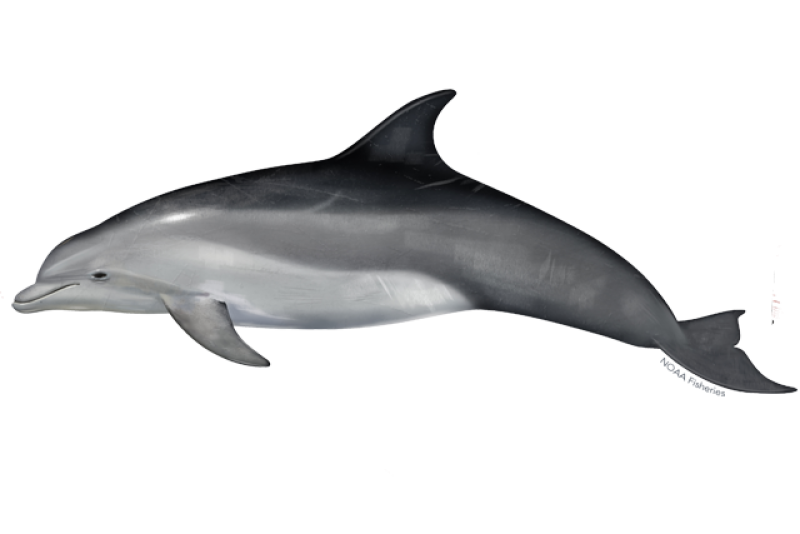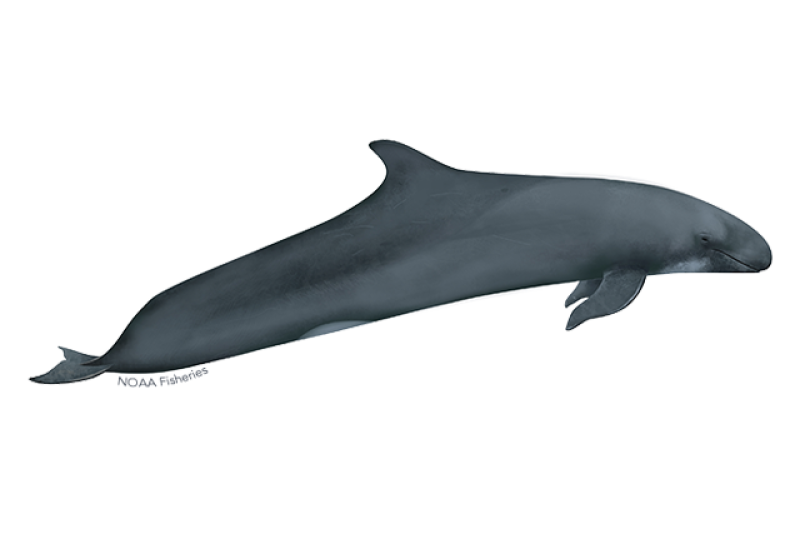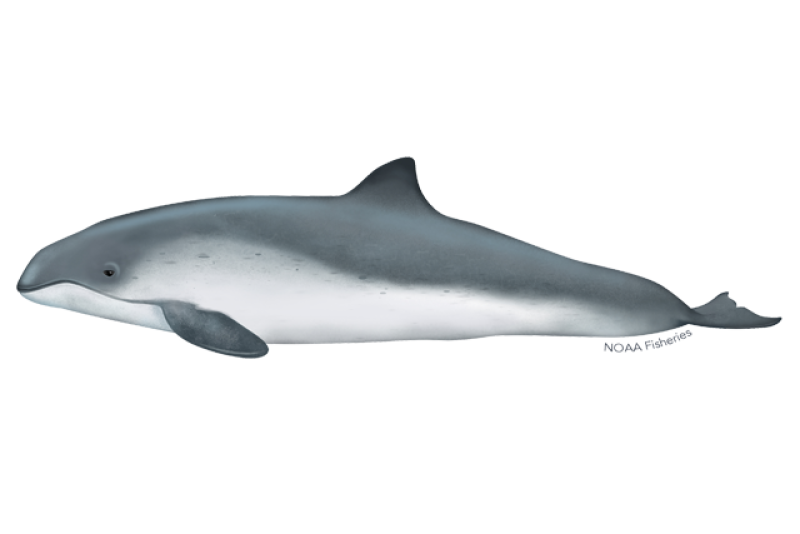Dolphins and porpoises are at the top of the food chain and play an important role in the overall balance of the marine environment. They belong to a group of marine mammals called cetaceans. Marine mammals in the cetacean family include whales, dolphins, and porpoises. These animals are often referred to as “sentinels” of ocean health providing insight into marine ecosystem dynamics. Numerous studies have explored the effects of noise and chemical pollution, habitat degradation, and changes in climate on these animals.
Dolphins and porpoises tend to be social and live in groups. They exhibit complex methods of communication and echolocation making squeaks, buzzes, whistles, and clicks that can be heard from miles away. They are also thought to communicate by slapping the water’s surface with their tails or bodies. They range in size from the small, critically endangered vaquita porpoise to the iconic killer whale—the largest member of the Delphinidae, or dolphin family.
All dolphins and porpoises are protected under the Marine Mammal Protection Act, and some are also listed under the Endangered Species Act. Together with our partners, we work to study, protect, and conserve these fascinating species and their habitats.
Species News
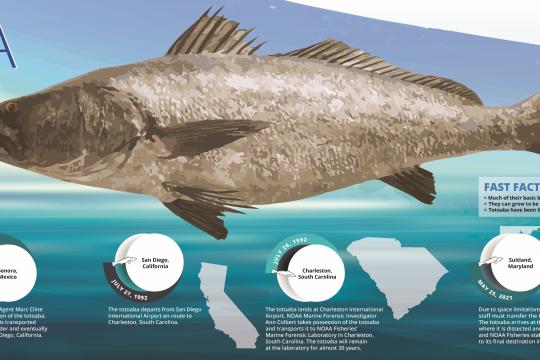 A timeline of one totoaba specimen’s journey from the illegal wildlife trade to its final resting place as part of the Smithsonian Institution’s National Fish Collection. Credit: Sandra Graubard/NOAA Fisheries
A timeline of one totoaba specimen’s journey from the illegal wildlife trade to its final resting place as part of the Smithsonian Institution’s National Fish Collection. Credit: Sandra Graubard/NOAA Fisheries
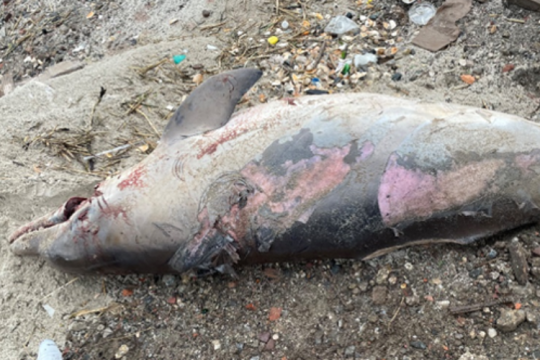 Bottlenose dolphin. Credit: New York State Department of Environmental Conservation
Bottlenose dolphin. Credit: New York State Department of Environmental Conservation
 A false killer whale grabs a mahimahi hiding under a bucket lid, looking very much like an Avenger in the process! Credit: NOAA Fisheries/Ernesto Vazquez (Permit #25754)
A false killer whale grabs a mahimahi hiding under a bucket lid, looking very much like an Avenger in the process! Credit: NOAA Fisheries/Ernesto Vazquez (Permit #25754)
 Stranded juvenile bottlenose dolphin. Credit: Audubon Aquarium Rescue
Stranded juvenile bottlenose dolphin. Credit: Audubon Aquarium Rescue
Multimedia
 A small fishing vessel near wind turbines. Credit: Bob Brewer on Unsplash
A small fishing vessel near wind turbines. Credit: Bob Brewer on Unsplash
 Humpback whales swimming underwater. Credit: Kogia.org
Humpback whales swimming underwater. Credit: Kogia.org
Research
Marine Mammal Acoustics
We record the sounds produced by marine mammals and study their behaviors, locations, population sizes, and potential threats.
Click Detection Rate Variability of Central North Pacific Sperm Whales From Passive Acoustic Towed Arrays
Understanding the factors affecting their click rates provides important information for acoustic…
Publications by Northeast Passive Acoustics Branch Staff
We regularly publish their findings in scientific journals and Center-produced documents.
Common Bottlenose Dolphin Ecotypes of the Western North Atlantic Revisited
Research proposing the recognition of a distinct species of coastal bottlenose dolphin.
Understanding Sound in the Ocean
Levels of underwater noise from human activities—including from ships, sonar, and drilling—have increased dramatically.








